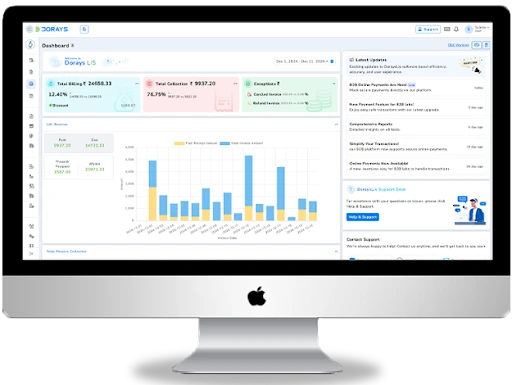Pathology
Streamlining the management of medical images and patient data has become critical in modern healthcare. Picture Archiving and Communication System (PACS) is one innovation transforming how hospitals and clinics operate. But what exactly is PACS, how does it work, and why is it so important? This blog answers all your burning questions about PACS systems.
What Is PACS?
PACS stands for Picture Archiving and Communication System. It is a medical imaging technology used for storing, retrieving, managing, and sharing medical images electronically. Medical images include X-rays, CT scans, MRIs, and ultrasounds. PACS eliminates the need for traditional film-based image storage and allows healthcare professionals to access patient images instantly, no matter their location.
What Is PACS Used For?
PACS is widely used in diagnostic imaging departments, radiology, and other areas of healthcare. Its primary function is to provide reliable access to digital medical images. Whether it’s for diagnosing fractures, monitoring treatment progress, or preparing for surgeries, PACS plays an essential role in improving healthcare efficiencies and patient outcomes.
What Does a PACS System Do?
A PACS system serves several purposes:
- Digital Storage: Stores medical images and related data securely.
- Instant Access: Offers immediate access to images for authorised users.
- Sharing Across Locations: Enables seamless sharing of images between hospitals, clinics, and even specialists based remotely.
- Integration: Works in tandem with other hospital systems like Radiology Information Systems (RIS) and Electronic Health Records (EHR).
What Are the Four Main Components of PACS?
Understanding PACS starts by breaking it into its four main components:
- Imaging Modalities
Devices like X-ray machines and MRIs that produce the medical images.
- Secured Network for Transmission
A secure system to transfer images from modalities to storage.
- Workstations
The computers or devices where healthcare professionals view and interpret images.
- Archives
The storage system where images and corresponding diagnostic reports are saved for future access.
What Are the Four Main Uses of PACS?
PACS is used extensively in healthcare. The core use cases include:
- Archiving medical images for on-demand retrieval.
- Diagnosing conditions by providing high-quality imaging to professionals.
- Collaboration with healthcare teams across different facilities.
- Teaching and Training in academic medical institutions.
Benefits of a Picture Archiving and Communication System
PACS offers immense value to hospitals and clinics. Here’s a look at the overarching benefits:
Benefits of PACS for Medical Professionals
- Faster Diagnoses: Instant access to images can accelerate the diagnosis and treatment process.
- Remote Access: Specialists can access images from anywhere, enabling better collaboration.
- Improved Workflow: Integrating PACS with other hospital systems ensures seamless workflows.
Benefits of PACS for Patients
- Fewer Repeated Scans: Easily accessible records reduce the need for redundant diagnostic tests.
- Better Care Coordination: Faster sharing of imaging data improves the quality of multidisciplinary care.
- Enhanced Confidence: PACS ensures higher accuracy in diagnoses, fostering patient trust.
Who Uses PACS?
PACS is used by:
- Radiologists
- Cardiologists
- Oncologists
- Orthopaedic surgeons
- Emergency department teams
And many more. Essentially, anyone who relies on medical imaging in their workflow benefits from PACS.
How Are PACS Images Stored?
PACS images are typically stored in a secure digital format within a vast archive system. These archives are often hosted:
- On-site at the hospital (local servers)
- On the cloud (remote servers provided by PACS software vendors)
Cloud-based storage is increasingly popular due to its scalability and cost-effectiveness.
How It Works Together With Radiology Information Systems (RIS)
Radiology Information Systems (RIS) and PACS are often used together to streamline radiology workflows. RIS manages patient data, scheduling, and reports, while PACS handles image archiving and retrieval. Together, they create a seamless experience that reduces paperwork and boosts productivity.
Benefits of Combining PACS Software With RIS
- Centralised Access: By integrating PACS with RIS, healthcare providers access images and radiology reports from a single platform.
- Eco-Friendly: Minimising paper records and films reduces environmental impact.
- Better Collaboration: Radiologists and other medical staff can easily share detailed analyses.
Requirements for a PACS System
To run PACS effectively, healthcare facilities need:
- High-quality imaging modalities like CT scanners or MRIs
- A secure IT infrastructure, including fast networks for transmitting large files
- Workstations designed for diagnostic use
- Reliable PACS software from trusted vendors
Disadvantages of PACS
While PACS is a game-changer, it does come with some challenges:
- High Initial Costs
Implementing a PACS system requires significant investment in IT infrastructure and software.
- Learning Curve
Staff need training to maximise the potential of PACS software.
- Data Security Risks
Handling sensitive patient images digitally demands stringent cybersecurity measures.
- Maintenance Costs
Upgrading systems and software can be resource-intensive.
How Much Does a PACS System Cost?
There’s no one-size-fits-all answer. The price of a PACS system depends on factors such as:
- Size and scale of the healthcare facility
- Number of users and devices connected
- Type of storage (on-site vs cloud-based)
On average, a small setup may start at $5,000–$10,000, whereas larger hospitals could spend upwards of $100,000 for custom solutions.
Unlock the Potential of PACS for Your Healthcare Facility
Picture archiving and communication systems represent the future of medical imaging. From enhanced workflows to improved patient care, PACS is a must-have for any forward-thinking healthcare organisation. While there are financial and technical hurdles in implementation, the long-term efficiency and accuracy more than justify the investment.
Interested in finding the best PACS system for your needs? Explore our curated list of top PACS software vendors and solutions.

